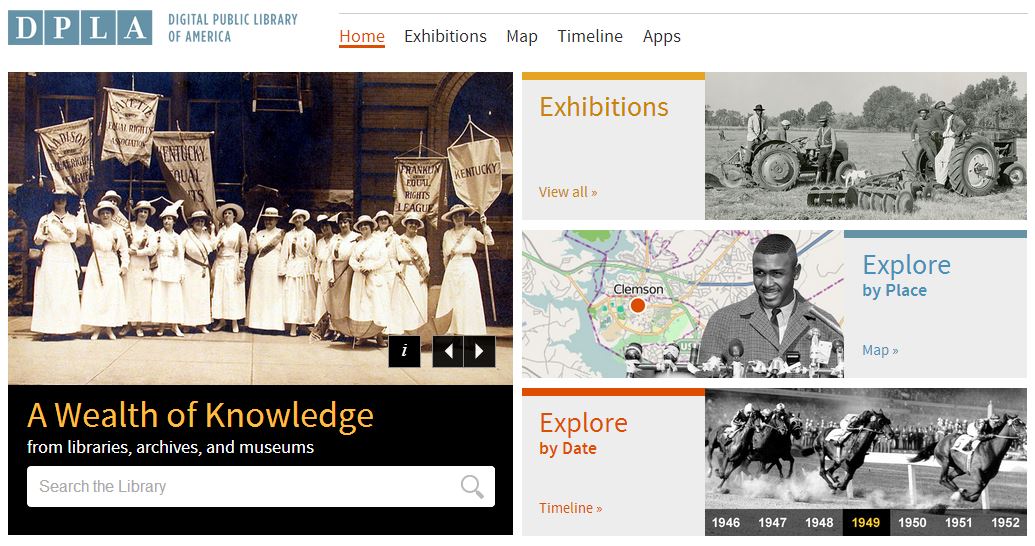The Digital Public Library Launches with 2.4 Million Records
- by Michael Stillman

The DPLA website.
The Digital Public Library of America went live in April, and it provides one more online resource for those looking to do historical research. It is not the first such digital resource, nor will it be the last, but it provides one more place where we can look to find information that a few years ago would have been beyond reach, buried in the archives of countless institutions. Now, just a little over two years after this plan was hatched, 2.4 million new/old records are available to the public at a click of a mouse. And, that number will grow.
The DPLA joins several other databases pertaining to books and related material already available online. Public resources such as the Internet Archive, Project Gutenberg, HathiTrust, and numerous databases from single institutions, along with private sources such as Google Books, our own AE Database, and subscription databases made available at libraries, already provide a wealth of information from the world of print and paper. The DPLA now adds another. This one is a bit more oriented to the image than some of the others. Books are among its records, but so are photographs, manuscripts, maps, videos and sound recordings. A wealth of American history in different formats is available to anyone who visits their site.
Presenting examples of the range of material available, a spokesperson for DPLA said, “Among the 2.4 million records available at launch, you will find gems that include daguerreotypes of former Presidents George Washington and Abraham Lincoln, images of women marching for the vote in Kentucky, news film clips of the Freedom Riders during the Civil Rights movement, The Book of Hours, an illuminated manuscript from 1514, Notes on the State of Virginia, written by Thomas Jefferson, and paintings by Winslow Homer.” That would be a daguerreotype of a painting of George Washington, since Louis Daguerre didn't invent his photographic process until about 40 years after Washington died. The rest looks live, and affords an example of what types of material you can now view from your home or anywhere else online at any time.
The DPLA was formed in late 2010 by a group of librarians and representatives of other institutions. They have been gathering access to various collections and making them available through the common DPLA portal. It takes a lot of cooperation and a lot of technical expertise to make it all work. You don't have to be concerned with that. All you need to do is go to their website, punch your keywords into their search box, and look at the results. Or, you can view their online exhibitions, time line, or map. Each provides another means of accessing the large database.
To visit the Digital Public Library of America, click the following link: www.dp.la